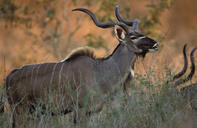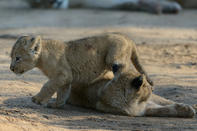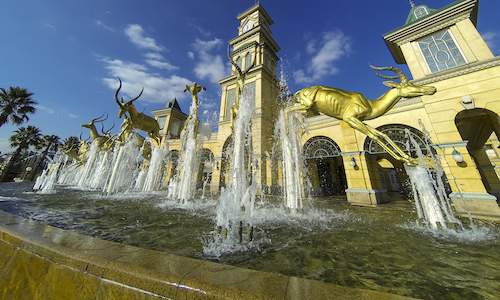Recovering the Game!
Under the effective leadership of James Stevenson-Hamilton, the Sabi and Shingwedzi Reserves were doing well. They had grown exponentially in size and the game was slowly recuperating after decades of untrammelled hunting.

According to James Stevenson-Hamilton’s estimates, as quoted in Jane Carruthers' book on the history of the Kruger Park, “In 1902 there were no black rhinos, elephant, eland, hartebeest or ostrich in the area; there were about 15 hippos, 5 giraffe, 8 buffalo, 12 sable antelope, 2 roan antelope, 5 tsessebe, 40 blue wildebeest, 100 waterbuck, 35 kudu and numerous impala, reedbuck, steenbok and duiker. By 1909 he recorded 25 elephant, 7 or 8 rhinos, 50 or 60 buffalo, numerous hippos and eland, and large herds of roan antelope, hartebeest, kudu and many other species.”
The Cause Beyond Enjoyment

“What then exactly was I working for, beyond the mere enjoyment of the life itself? Would it be possible to wean the South African public from its present attitude towards the wild animals of its own country, which was that of regarding them either as a convenient source of exploitation, or as an incubus hindering the progress of civilisation? It seemed pretty hopeless.
There was no money for development, nor likely to be; in fact, at the start of each financial year I gave a sigh of relief when I found our small grant of £5000 still on the estimates.” It was around this time that James Stevenson-Hamilton began reading up on the American National Parks system and was amazed to find that the Federal government (despite some opposition) was prepared to protect their natural landscapes and wilderness areas from the depredations of development (the world’s first ‘national park’ was Yellowstone, declared in 1872).
At the same time, he noted, they made this heritage accessible to the public for its edification and to bolster national pride. It was a uniquely democratic approach to land ownership and use, quite unlike the aristocrats and private landowners who controlled the beauty spots of Europe.
Irreplaceable Wilderness

He also read texts by the influential naturalist and writer Aldo Leopold who believed that wilderness areas were an irreplaceable resource that had to be preserved for the physical and spiritual health of future generations. Furthermore, James Stevenson-Hamilton was in touch with the Society for the Preservation of the Wild Fauna of the Empire, the Zoological Society and the Royal Geographic Society, all of whom offered their advice and support.
And so it was that James Stevenson-Hamilton began to consider that the best course of action was to have the Sabi Reserve declared a National Park in which the wildlife and flora of the Lowveld would be protected in perpetuity. Unfortunately, the government had other things on its mind and the general public was far from supportive of the scheme. It would take over twenty years of constant campaigning and nagging before James Stevenson-Hamilton’s dream finally came true, and there would be many setbacks along the way.
By David Fleminger During the 1890s, things grew chaotic in the Republic of the Transvaal (present day Mpumalanga). Since the discovery of gold, Johannesburg h...
During the 1890s, things grew chaotic in the Republic of the Transvaal (present day Mpumalanga). Since the discovery of gold, Johannesburg h...